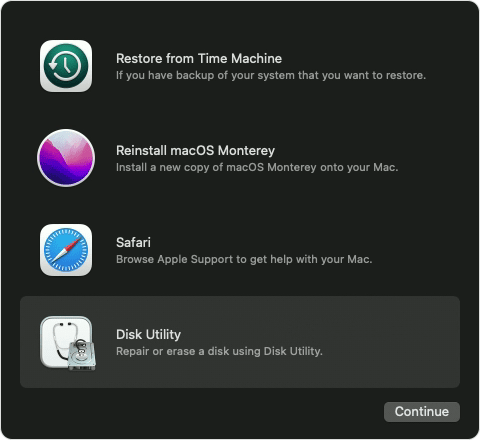

- #Which is the startup disk in disk utility apple mac os x#
- #Which is the startup disk in disk utility apple software#
- #Which is the startup disk in disk utility apple professional#
- #Which is the startup disk in disk utility apple mac#
Launch the Disk Utility from the Applications > Utilities and follow the steps below:
#Which is the startup disk in disk utility apple mac#
How do I restore my Mac using Disk Utility? By using Disk Utility, you can perform a number of tasks to manage, secure, and repair your Mac's internal drive and external hard drive. Seldom do we realize that the best solution to manage our Mac is lying inside our Mac system in the form of Disk Utility. However, we tend to search for a good third-party app to do this job for us. We all want to keep our Mac systems well-organized to achieve optimum productivity. This time choose the Reinstall macOS option to boot from the startup disk again. Reboot your Mac in Recovery mode once the reformatting by Disk Utility is done. Step 5: Now click the Erase button to confirm the action. Step 4: Choose a format and rename the drive as Macintosh HD in the pop-up window that appears. Step 3: Select your Mac's corrupted/failed internal drive (Macintosh HD or Apple SSD) from the left pane and click Erase on the top of the Disk Utility window.
#Which is the startup disk in disk utility apple mac os x#
Step 2: Open Disk Utility from the macOS Utilities or Mac OS X Utilities window. Step 1: Boot your Mac into Recovery Mode. You can use the Disk Utility to reformat your Mac’s internal drive by following the steps below:
#Which is the startup disk in disk utility apple software#
This recovery software comes with a bootable recovery feature that allows you to recover data even from a non-booting Mac system.
#Which is the startup disk in disk utility apple professional#
If you do not have any backup of your data, it is better to recover it using Stellar Data Recovery Professional for Mac. Although, before proceeding to reformat your hard drive or SSD, you must understand that reformatting will erase all the data on your drive.

However, you can still use Disk Utility to resolve the problem by reformatting the internal hard drive or SSD. Reformatting Mac Startup Disk using Disk Utilityįirst Aid will not work if the startup disk is corrupted or has errors beyond repair. Step 4: Once the First Aid repair of the startup disk is complete, check if your Mac boots normally. Step 2: Click the First Aid tab on the top of the Disk Utility window. Step 1: Select the startup disk (Macintosh HD or Apple SSD) from the left panel of the Disk Utility window. If you find some errors on your Mac startup disk, follow the steps below to repair the disk: Repair Mac Startup Disk using Disk Utility Then, select Disk Utility and click Continue.ĭepending on the issue with your startup disk, you need to repair it or reformat it. When your Mac boots up in Recovery Mode, you will see the macOS Utilities or OS X Utilities window on your screen, depending on the OS of your Mac. First, shut down your Mac and then boot it in Recovery Mode by following the steps below (see image), according to your system's processor chip. If your Mac freezes or gets stuck on the startup screen, apple logo, or spinning wheel, Disk Utility can help you fix the issue. Situation 2: Access Disk Utility when Mac won’t Boot Up Or, you can click on Finder > Applications > Utilities > Disk Utility. You can launch Spotlight from the Dock and search Disk Utility. When your Mac system is booting up in the usual manner, accessing Disk Utility is just similar to accessing any other app on your Mac. Situation 1: Access Disk Utility on Mac with Normal Startup Accordingly, you can choose the suitable method to access the Disk Utility. You can have two situations on your Mac system.
/DiskUtilityRestore-56a5d4fc3df78cf7728a0f29.jpg)


 0 kommentar(er)
0 kommentar(er)
